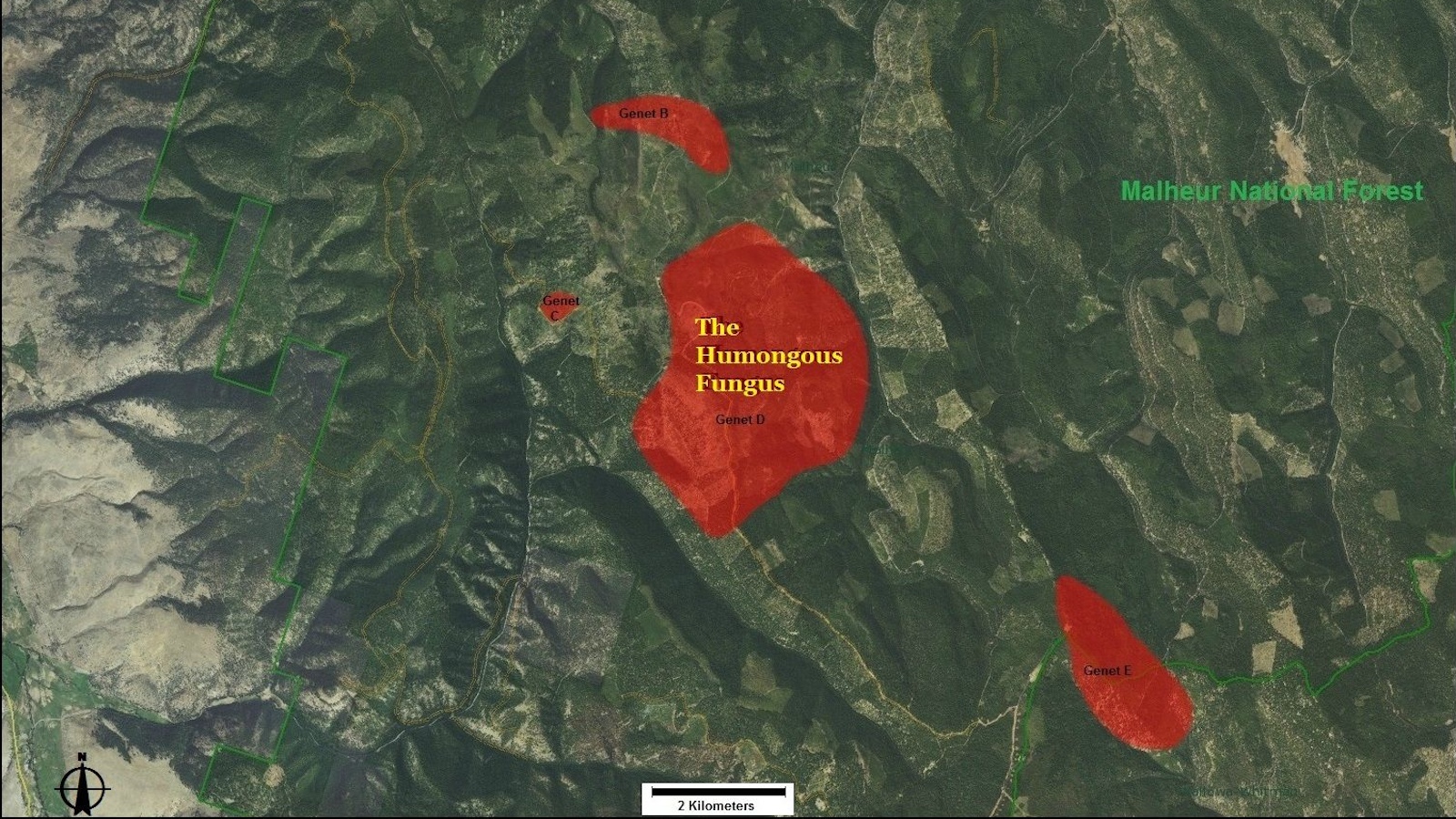This is what would happen if an asteroid hit New York

Last week, an asteroid fell from the sky and struck the Lake Michigan area. What if it had been a city-killer instead?
“By preventing dangerous asteroid strikes, we can save millions of people, or even our entire species. And, as human beings, we can take responsibility for preserving this amazing evolutionary experiment of which we and all life on Earth are a part.” –Rusty Schweickart
Early last Monday morning, a giant fireball was witnessed by thousands of people across multiple states, as it plunged from outer space into Lake Michigan. Sonic booms could be heard for nearly 100 miles as houses shook. A brilliant but eerie green glow, created by the elements in the meteor heating up in the atmosphere, resulted in more than 200 calls to the American Meteor Society. And reports of people seeing it ranged as far east as New York and as far south as Kentucky. Although no fragments have been recovered, it’s estimated that this meteor was between 1 and 7 tons in mass: around the size of a minivan. Moving at a speed of tens of thousands of miles per hour, the energy of this asteroid strike was equal to about 500 tons of exploding TNT.
According to Philipp Heck, scientist at the Field Museum of Natural History in Chicago, impacts like this on Earth aren’t rare at all.
“Such an event of this magnitude didn’t occur over the Midwest/Chicagoland area since 2003 when the Park Forest meteorite produced a similar fireball. Globally such events are much more frequent, many times each year, but mostly happen over the ocean and are therefore not observed.”
Asteroids a few meters in size strike Earth a few times each year on average, and only rarely impact a populated area. But when they do, the world takes note.
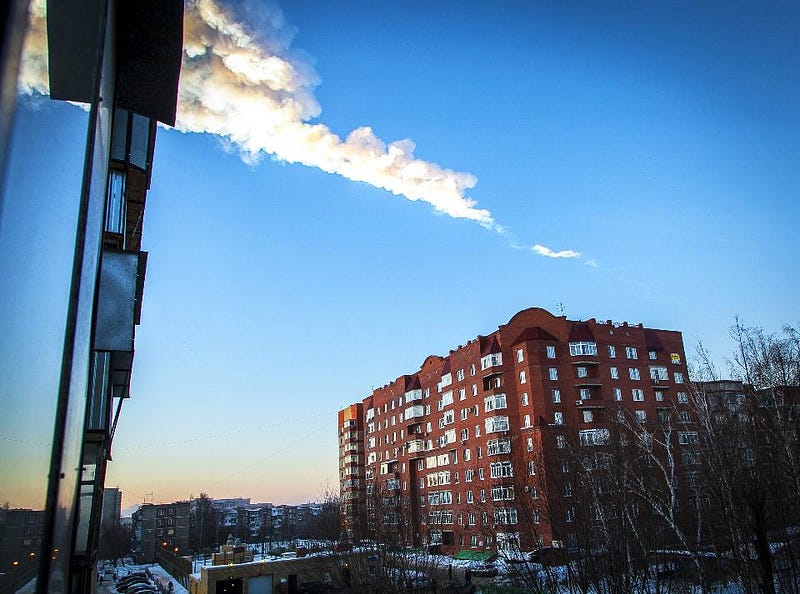
The 2013 impact in Chelyabinsk, Russia, was the most destructive such strike in modern times. It may have only been about ten meters across, but its impact in an urban area caused millions of dollars worth of property damage and resulted in more than 1,500 documented injuries. A century earlier, the Tunguska event leveled over a thousand square kilometers of forest, exploding with an energy of between 5 and 10 MegaTons of TNT: similar to an atomic bomb.
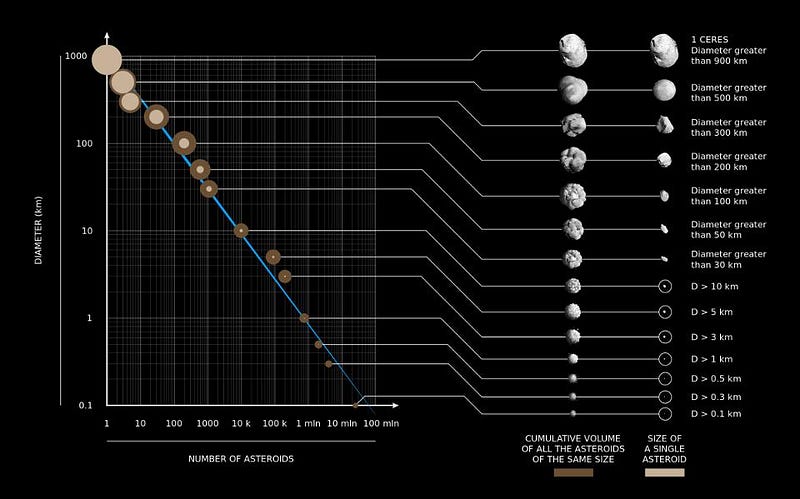
There are nearly a billion objects in our Solar System capable of causing that level of devastation on Earth, and 300,000 of them are already in our neighborhood. These Near-Earth Objects (NEOs) pose the greatest threat to Earth’s cities.
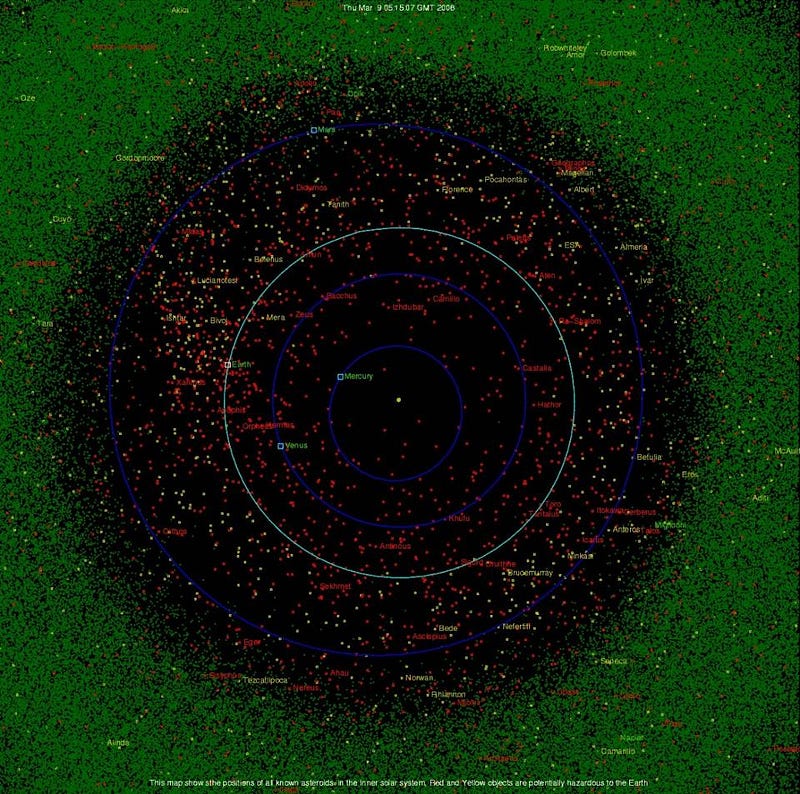
While the closest asteroids ever observed to swing by Earth are understandably small — under 10 meters — the danger of a 100 meter-sized asteroid striking Earth is catastrophic. We know that such asteroid strikes (Tunguska-level and up) are relatively common, occurring every few hundred years somewhere on Earth. While the ones striking the ocean or uninhabited land (like most of Russia or Canada) will have little-to-no impact on humanity, the destructive force from such an impact is undeniable.
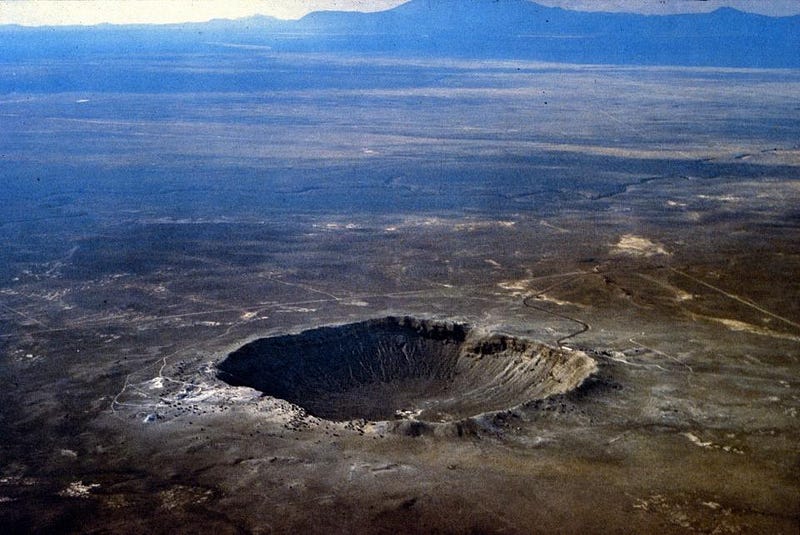
Thousands of years ago, cities were a minuscule fraction of Earth’s surface; practically all asteroid strikes were guaranteed to occur over virtually uninhabited areas. Today, urban areas now cover more than 3% of Earth’s land area, meaning that out of every 100 asteroid strikes our planet receives, roughly one of them will strike a city. And if that asteroid is around 100 meters in size or larger, the effects would be catastrophic.
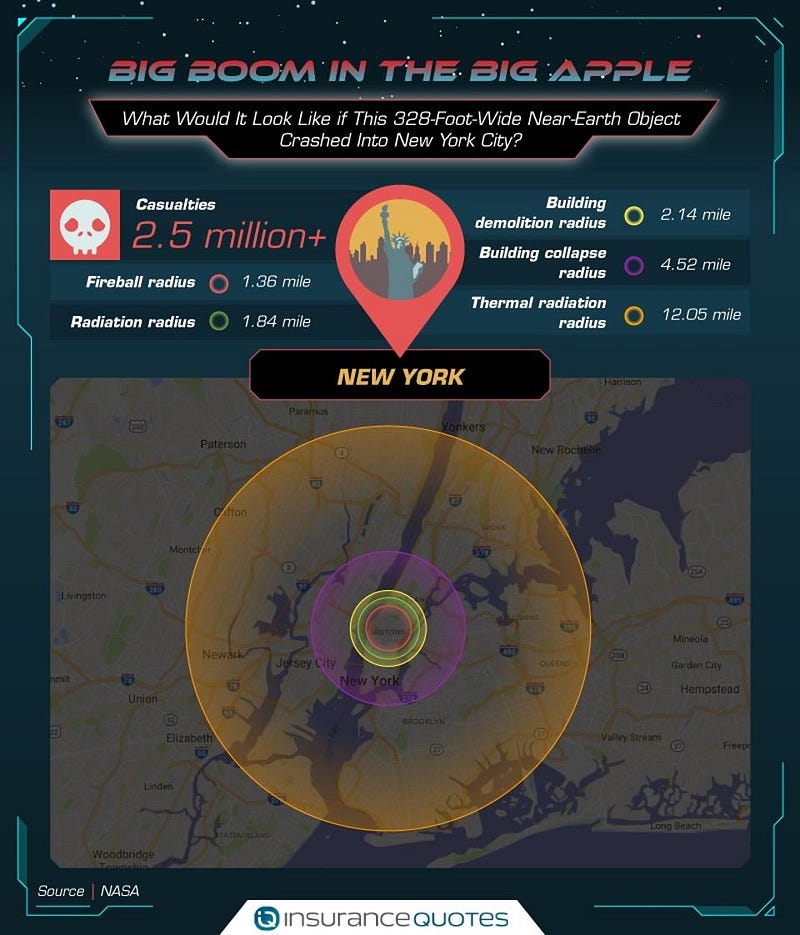
The first thing that happens would be the fireball from the initial strike, which would span nearly four kilometers in diameter for an asteroid only 100 meters in size. (And that’s its size in space, not when it reaches the ground!) Next is the catastrophic effects of radiation: thermal, not nuclear. This won’t poison you, but will simply cook you, albeit more slowly than the fireball does, covering nearly double the area of the fireball. Buildings will be immediately leveled by the blast far beyond that, while extending more than twice as far out, structures will need to be demolished due to structural damage. And finally, extending out for approximately 40 kilometers in diameter, every human being will experience burns on their skin simply due to the heat emitted. All told, more than 2.5 million people would die if such an asteroid struck midtown Manhattan.
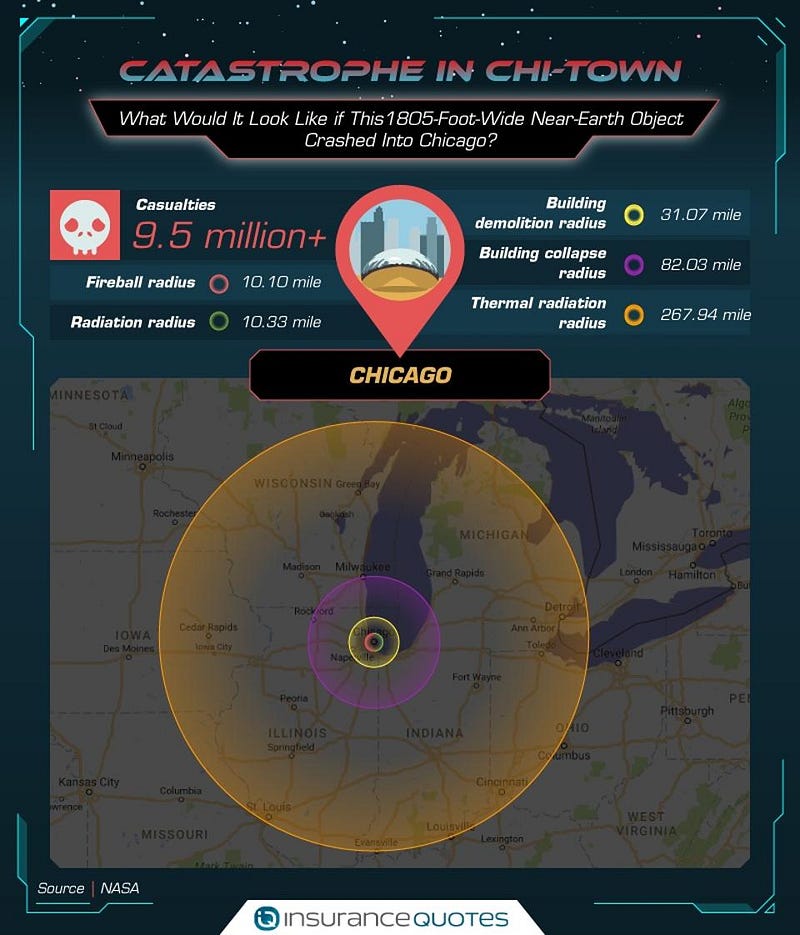
Increase the asteroid to about 500 meters in size, and the destruction goes on for hundreds of miles instead. A strike of this magnitude in the wrong location could result in the death of approximately 10 million people were it to strike an area like Chicago, or more than 30 million were it to strike one of the most populous regions in the world like Tokyo or Mexico City.
The first step to fighting it? Identifying the hazards that are out there.
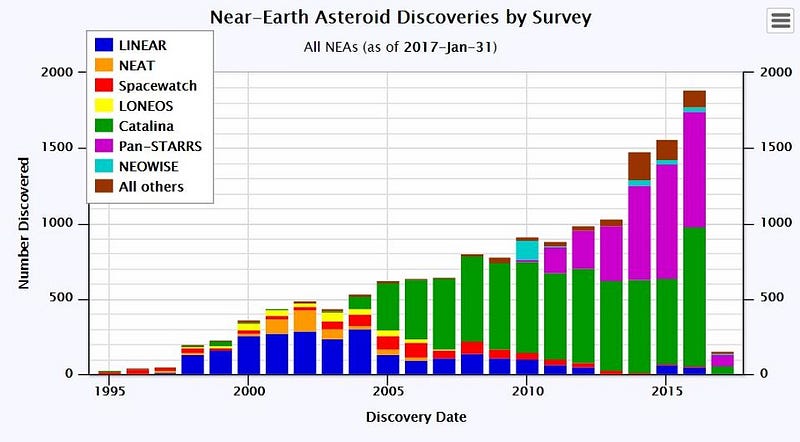
For practically all of the 20th century, the only NEOs we found were through our good fortune while we were observing other targets. But thanks to dedicated surveys covering most or all of the sky like LINEAR, Catalina and Pan-STARRS, we’re now finding more than 1,000 new such objects every year. By learning what’s out there, we can track their motion and learn to predict where they are and where they’ll be relative to us. The way to counter a threat is to understand and quantify it, something we’re finally beginning to do. A species-killing asteroid like the one that wiped out the dinosaurs likely won’t occur again for tens of millions of years, but a city being destroyed is quite likely sometime in the next few thousand years.
When that time comes, we can either be surprised and suffer the consequences, or we can be ready. Those steps begin today.
This post first appeared at Forbes, and is brought to you ad-free by our Patreon supporters. Comment on our forum, & buy our first book: Beyond The Galaxy!

